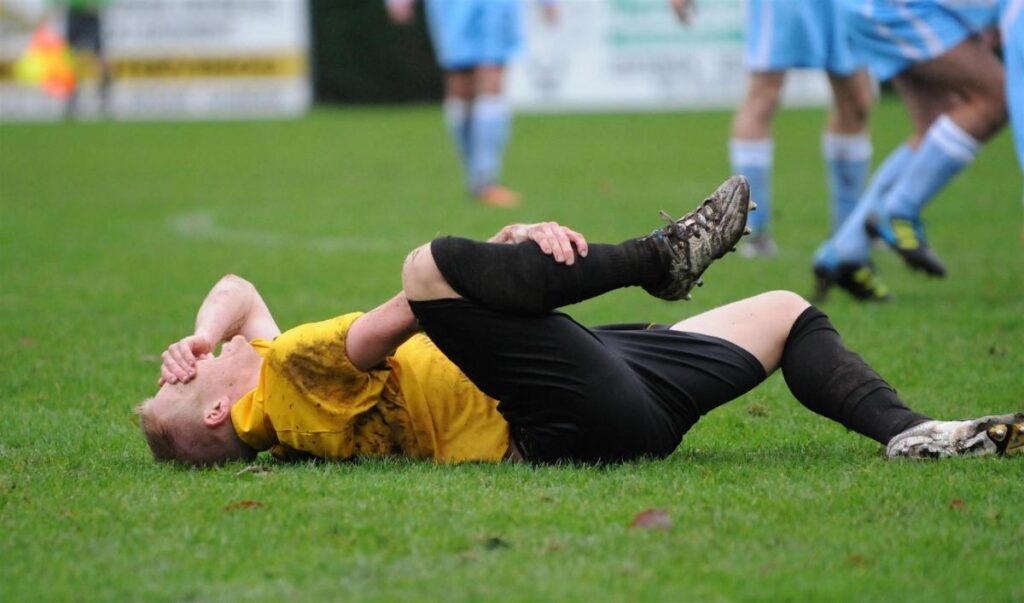Platelet-rich plasma (PRP) injections help many sports injuries heal faster.
Injuries can keep both weekend warriors and professional athletes from competing. Traditionally, athletes had two options: either sit out for weeks (or months) to recover or have significant surgery, neither of which is particularly appealing.
PRP injections present a radical third option. This orthobiologic treatment, which is minimally invasive, safe, and rapid, is quite successful in treating many of the most typical sports injuries. Specialty Care Clinics provide options to fasten your recovery process and help you to get back into normal life.
Regenerative medicine uses healthy regenerative cells throughout the body to help us naturally heal ourselves.

HOW DO BLOOD PLATELETS WORK?
Small, plate-like blood cells called platelets are naturally occurring providers of growth hormones, proteins, and cytokines that promote bone and soft tissue healing. Platelets carry out a number of crucial tasks :
Growth factors :- There are numerous ways to support cell healing. Reducing inflammation, promoting cell growth, and alerting the immune system of the body are a few of these.
Cytokines :- Nearly 90% of the bodily repairs that take place naturally are carried out by cytokines. In combination, cytokines speed up tissue and wound healing and are essential for cellular communication. Many metabolic pathways that promote cell healing are active depending on the individual cytokines.
Attracts stem cells :- When platelets bind to harmed soft tissue, a cascade of blood clotting occurs, and a fibrin clot forms to stop bleeding. Additionally, platelets draw your body’s stem cells, another element of natural healing. This crucial framework promotes the creation of new tissue, the synthesis of fibrin layers, and the start of the healing process.
The body’s own blood plasma, enriched with platelets, is known as platelet-rich plasma. Platelet concentrations in PRP are typically 5–10 times higher than in blood. As a result, PRP serves as a consolidator of the resources mentioned above, which collectively encourage repair and regeneration.

The body can recover from some sports injuries on its own over a few weeks or months. Simply said, the body’s capacity for self-healing is insufficient for more serious wounds. PRP quickens and expedites the natural healing process in both scenarios.
1. PRP treatment for tennis elbow
The condition known as tennis elbow or lateral epicondylitis can be effectively treated with PRP injections.
Forearm tendons get inflamed in this condition, which is typically caused by overuse and repetitive strain. Lateral epicondylitis is a common condition in climbers, painters, carpenters, quivers, mechanics, and anybody who performs repetitive arm movements. It can occur while playing tennis (particularly if you have biomechanical deficits).
These tendons recover very slowly because they receive so little blood. Tennis elbow pain is reduced by PRP injections, which also promote healing. According to studies, PRP injections can help tennis elbow patients regain function.
2. Rotator cuff injuries treated with PRP injections
Sports injuries frequently occur to the shoulder’s rotator cuff, muscles, and other soft structures. Any upper arm motion that is repeated over time, such as tossing a baseball or shooting hoops, might lead to issues. The rotating sleeve, however, is also a frequent location of damage from falls and other mishaps.
Partial tears and bursa irritation react exceptionally well to PRP injections, despite the fact that complete rotating sleeve tears typically require surgery.
Platelet-rich plasma therapies can also be quite helpful for rotator cuff tendinopathy or tendinitis.
3. Plantar fasciitis PRP treatment
The most frequent injury among runners and other people who perform physical activity or labor on their feet is plantar fasciitis. Many patients with this chronic ailment reject conventional kinds of treatment due to the tremendous health suffering it causes. Plantar fasciitis can result in bone spurs that need to be surgically removed if left untreated.
For this and other excruciating sports injuries, many individuals obtain cortisone injections. Although cortisone injections may briefly (up to a year) reduce pain, they do not help the wound heal. In fact, according to some research, repeated cortisone injections over time may cause the fat plate in the heel to atrophy, causing the heel to hurt worse.
PRP injections help reduce pain, but their main benefit is that they kick-start the healing process, allowing patients to keep the majority of their recovered function.
HOW SOON DO PRP INJECTIONS START WORKING?
PRP injections do not treat the issue or reduce symptoms in the same way that drugs or surgery do. Instead, they begin a natural regeneration process that, depending on the kind of injury, could take weeks or even months.
PRP injections for joints, bones, or muscles should start to take action in about three months and be fully effective in six to nine months.
If the pain or range of motion has not yet diminished significantly, another injection may be necessary. Even when the healing process is complete, the effect is unaffected.
Do not let sports injuries become an obstacle in your play. Contact Specialty Care Clinics at (469) 545-9983 for hassle-free treatment as well as to speed up your recovery.
